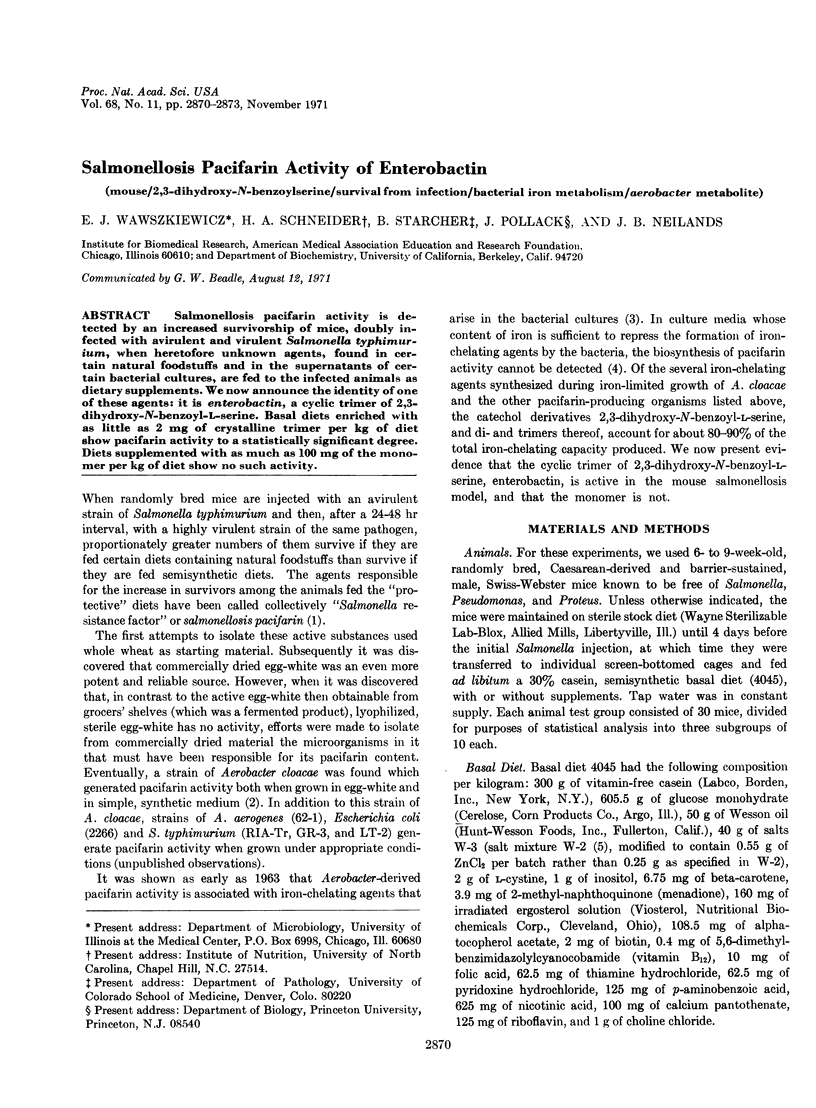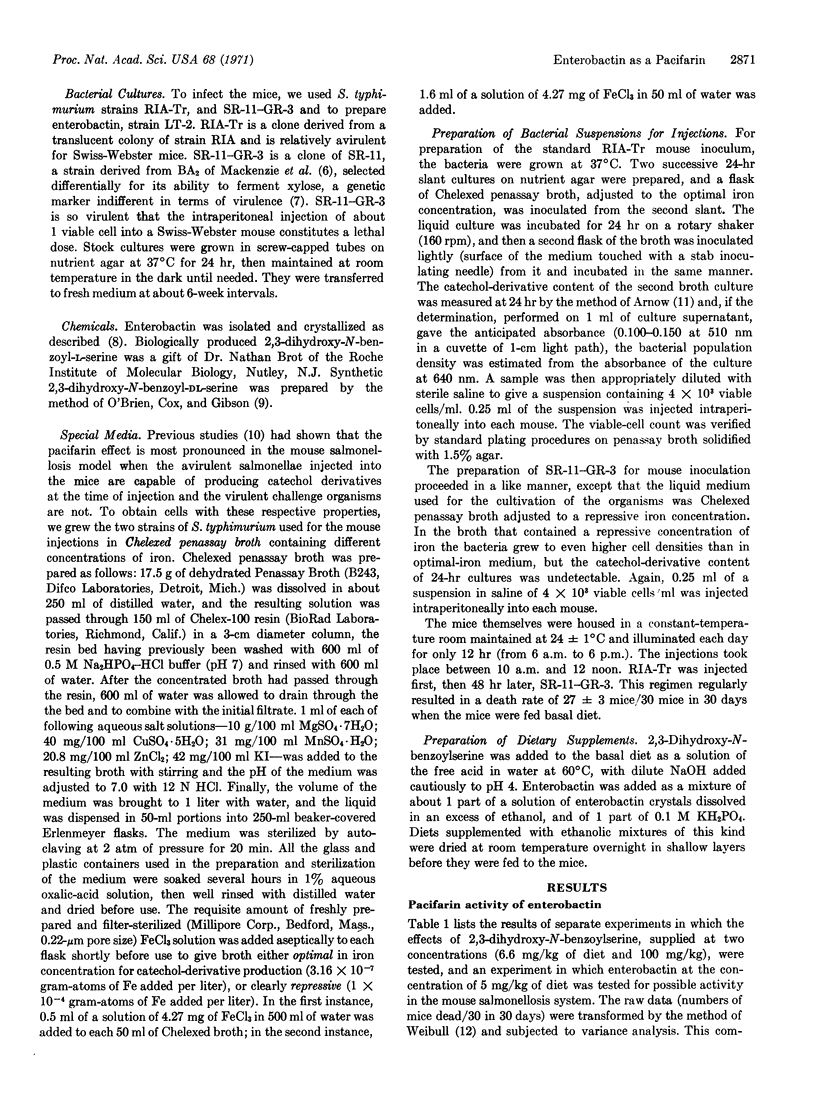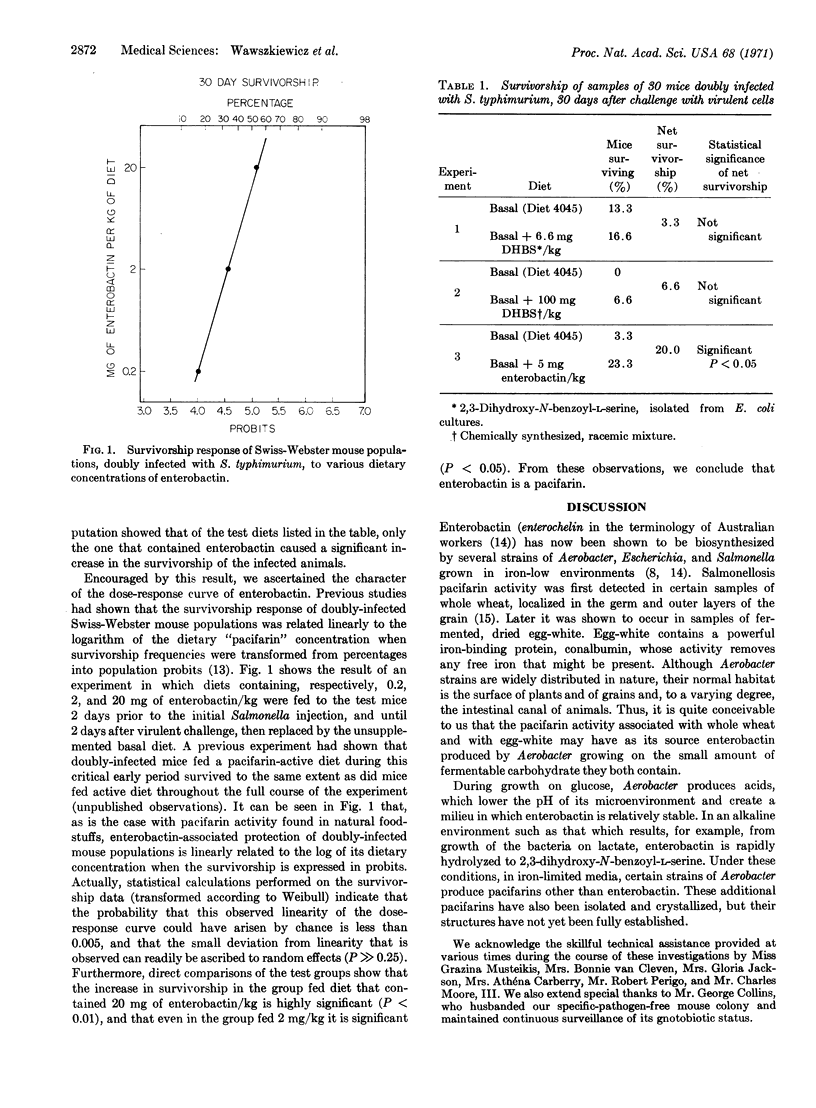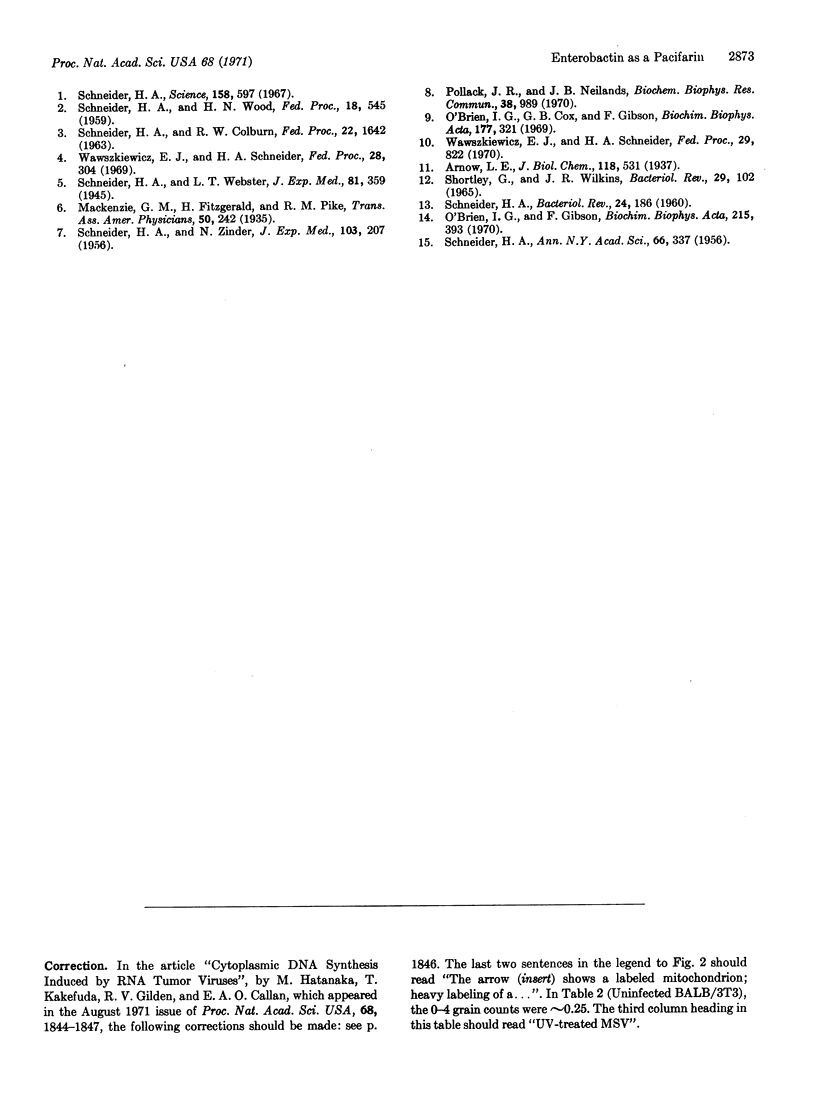Abstract
Salmonellosis pacifarin activity is detected by an increased survivorship of mice, doubly infected with avirulent and virulent Salmonella typhimurium, when heretofore unknown agents, found in certain natural foodstuffs and in the supernatants of certain bacterial cultures, are fed to the infected animals as dietary supplements. We now announce the identity of one of these agents: it is enterobactin, a cyclic trimer of 2,3-dihydroxy-N-benzoyl-L-serine. Basal diets enriched with as little as 2 mg of crystalline trimer per kg of diet show pacifarin activity to a statistically significant degree. Diets supplemented with as much as 100 mg of the monomer per kg of diet show no such activity.
Keywords: mouse; 2,3-dihydroxy-N-benzoylserine; survival from infection; bacterial iron metabolism; aerobacter metabolite
Full text
PDF



Selected References
These references are in PubMed. This may not be the complete list of references from this article.
- O'Brien I. G., Cox G. B., Gibson F. 2,3-dihydroxy-N-benzoylserine: chemical synthesis and comparison with the natural product. Biochim Biophys Acta. 1969 Apr 1;177(2):321–328. doi: 10.1016/0304-4165(69)90142-1. [DOI] [PubMed] [Google Scholar]
- O'Brien I. G., Gibson F. The structure of enterochelin and related 2,3-dihydroxy-N-benzoylserine conjugates from Escherichia coli. Biochim Biophys Acta. 1970 Aug 14;215(2):393–402. doi: 10.1016/0304-4165(70)90038-3. [DOI] [PubMed] [Google Scholar]
- Pollack J. R., Neilands J. B. Enterobactin, an iron transport compound from Salmonella typhimurium. Biochem Biophys Res Commun. 1970 Mar 12;38(5):989–992. doi: 10.1016/0006-291x(70)90819-3. [DOI] [PubMed] [Google Scholar]
- SCHNEIDER H. A. Nutritional factors in host resistance. Bacteriol Rev. 1960 Mar;24(1):186–191. doi: 10.1128/br.24.1.186-191.1960. [DOI] [PMC free article] [PubMed] [Google Scholar]
- SCHNEIDER H. A., ZINDER N. D. Nutrition of the host and natural resistance to infection. V. An improved assay employing genetic markers in the double strain inoculation test. J Exp Med. 1956 Feb 1;103(2):207–223. doi: 10.1084/jem.103.2.207. [DOI] [PMC free article] [PubMed] [Google Scholar]
- SHORTLEY G., WILKINS J. R. INDEPENDENT-ACTION AND BIRTH-DEATH MODELS IN EXPERIMENTAL MICROBIOLOGY. Bacteriol Rev. 1965 Mar;29:102–141. doi: 10.1128/br.29.1.102-141.1965. [DOI] [PMC free article] [PubMed] [Google Scholar]
- Schneider H. A. Ecological ectocrines in experimental epidemiology. A new class, the "pacifarins," is delineated in the nutritional ecology of mouse salmonellosis. Science. 1967 Nov 3;158(3801):597–603. doi: 10.1126/science.158.3801.597. [DOI] [PubMed] [Google Scholar]


